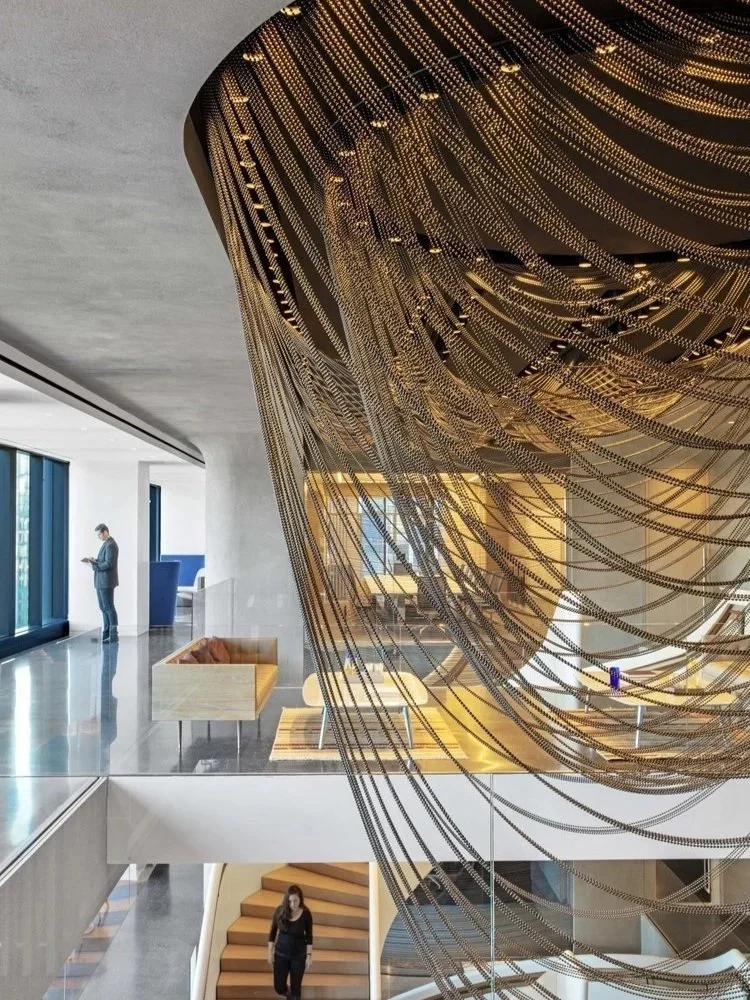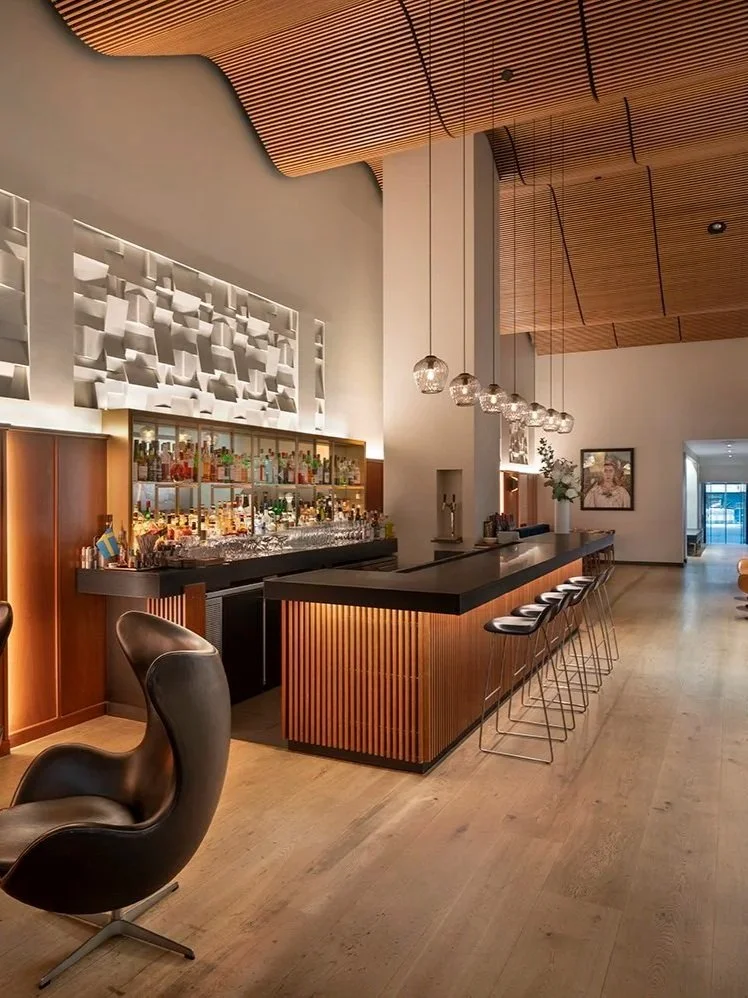Material Matters: How Architecture is Shaped by Texture, Tone, and Sustainability
In 2025, architecture no longer relies on materials solely for their structural capacity—it calls on them to articulate, and to perform. Wood, once a humble staple, now signals biophilic intention and tactile comfort; its grain and hue soften even the most technologically sophisticated spaces in the familiar rhythms of nature. Concrete, once synonymous with brutal pragmatism, has found nuance—its mass reimagined as sculptural, its surface tuned to absorb or reflect, to dominate or disappear.
Each selection speaks volumes about a project’s priorities—about what (and whom) it values. At Spacesmith, our LEED + WELL-accredited principals consider materiality not merely to build, but to tell stories, provoke responses, and shape behavior.
In recent projects, six key materials stand out, not just as finishes, but as fundamental elements that shape architecture from the inside out, defining atmosphere, anchoring structure, and choreographing experience.
Metal
Boies Schiller Flexner
Suspended from the staircase, a striking sculpture of overlapping metal beads weaves a visual link between the main reception and upper floors. This kinetic constellation of shimmer and weight animates the space, playing against the solidity of curved concrete walls and polished black terrazzo. The result is a composition of contrasts—stillness and motion, opacity and reflection.
Sustainability
Reflective, sculptural, and endlessly customizable, metal brings bold aesthetics with a sustainable edge. It’s energy-efficient in performance and often fully recyclable, making it a smart choice for forward-thinking architecture.
Wood
Aquavit
Wood plays a central role in Aquavit’s warm, tactile design, grounding the interiors in Scandinavian tradition while celebrating craftsmanship. A new wide-plank oak floor, left raw to highlight the natural grain and variation of the wood, runs continuously throughout the restaurant. This honest materiality extends to the walls and paneling, establishing a sense of place that is both elegant and deeply rooted in Nordic sensibilities.
Sustainability
Wood remains one of architecture’s most sustainable materials. When responsibly harvested (FSC- certified) and finished with low-emission products, it supports both environmental health and occupant well-being.
Marble
MarketAxess
The central staircase serves as a sculptural anchor within the space, with its textured marble introducing a rich visual rhythm to the architecture. The natural veining and tonal variation of the stone add depth and movement, elevating a functional element into a unifying aesthetic focal point.
Sustainability
Marble is inherently sustainability: a durable, long-lasting material that requires no synthetic processing and can be repurposed over time—offering both beauty and longevity with minimal environmental impact.
Cork
10 Halletts Point Playroom
Cork provides a naturally cushioned surface that is gentler on little knees and heads during play or tumbles. Safer than harder materials like tile or wood, cork adds a layer of comfort and protection. The finishes and adhesives used are all water-based, reinforcing the room’s commitment to healthy construction.
Sustainability
Cork is a renewable resource, harvested by hand from the bark of the cork oak tree without harming it. The tree continues to thrive—often for centuries—making cork a truly sustainable, resilient material.
Textiles
HallettsPoint
Amenities play a vital role offering moments of relaxation, recreation, and connection. In the kitchen, a standout feature is the long bench upholstered in a bold red fabric designed by artist Shantell Martin. The vibrant print, rendered on a durable cotton-nylon blend, brings both energy and resilience to the communal setting.
Durability
Cotton‑nylon textiles are highly durable, performance-ready pieces that beautifully carry Shantell’s signature continuous-line artwork into upholstery, wallcovering, and more.
Concrete
Global Brands Group
To support a cultural shift toward openness and collaboration, this design reimagines the traditional office layout. Sculptural, curvilinear concrete walls replace rigid partitions, reflecting a more fluid and contemporary approach to workspace design—one that invites movement, connection, and visual continuity.
Durability
Concrete is prized for its strength, longevity, and adaptability. Its raw, industrial beauty allows architects to craft spaces that are both bold and resilient. In modern applications, concrete serves not only as structure but as statement.






